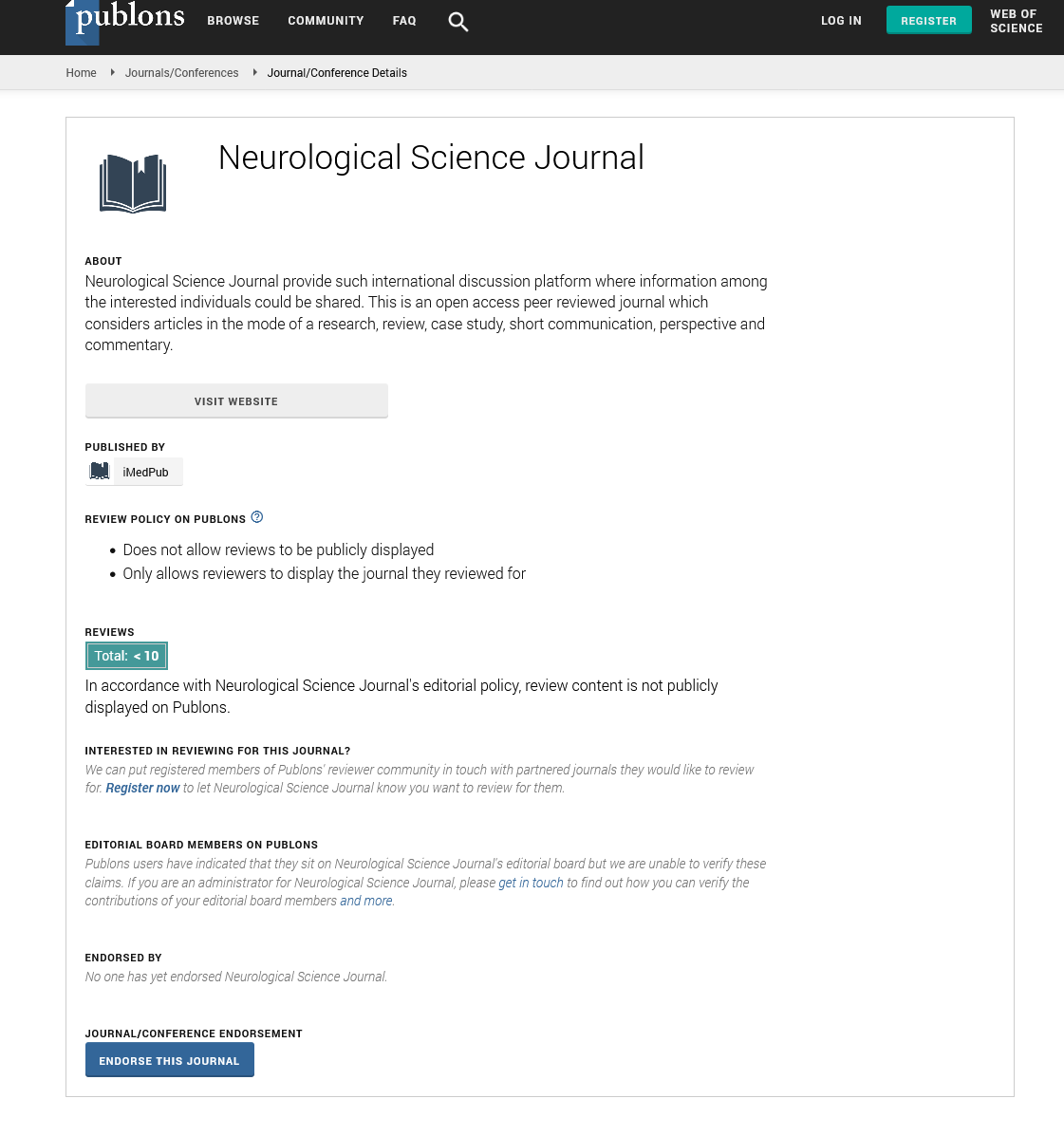Abstract
Combination therapy with astaxanthin and epidermal neural crest stem cells improves motor impairments and myelin levels - Leila Mohaghegh Shalmani - Shahid Beheshti University of Medical Sciences - Iran
Spinal cord injury (SCI) can lead to temporary or permanent loss of neurologic function. Nevertheless, the ideal treatment has not found for SCI. Since the SCI is a complex, multifaceted disease process so, combinatorial treatments can be a promising approach. Epidermal neural crest stem cells (EPI-NCSCs) are unique candidates which isolated from bulge hair follicles in adults due to the possibility of autologous transplantation. We evaluated whether combination of a potent antioxidant such as Astaxanthin (AST) and (EPI-NCSCs) transplantation could affect (SCI). The sever SCI induced by dropping a metal rod onto the exposed dorsal surface of the spinal cord on male rats witch treated by Ast (0.2mM) and EPI-NCSCs (106/10μl PBS) alone and combined. The Basso, Beattie and Bresnahan (BBB) test on days 1, 3, 7, 14, 21, 28, 35 and 42 post-injury was used for assessing of Motor function. The Motor neurons number and the myelin level were investigated on days 14 and 42 using Nissl and Luxol Fast Blue staining. All treatments improved motor function on days 7, 14, 21, 28, 35 and 42 compared to SCI. However combination therapy was more effective than Ast or EPI-NCSCs individually in behavioral improvement. Decreased the motor neurons number following SCI, increased by Ast, Cell and Ast+Cell, but combination therapy significantly had better effects. Although all treatment increased white matter compared to SCI, treatment with Ast+Cell had increased myelin levels.
Introduction:
Spinal cord injury (SCI) a multifactorial disease and it is also a debilitating condition in which it can leads to temporary or permanent loss of neurologic function and it also causes continuous neurological deficits and major sensory-motor impairments. Symptoms of Spinal cord injury (SCI) may include the loss of muscle function, sensation, or autonomic function in the body parts served by the spinal cord below the level of the injury. The medicinal therapy of Spinal cord injury (SCI) complications is still a clinical challenge one. Understanding the molecular pathways and underlying the progress of damage will help us to find new therapeutic candidates. The Spinal cord injury (SCI) experience significantly shows the impairments in various aspects of their life. The goals of rehabilitation and other treatment approaches in Spinal cord injury (SCI) are to improve the functional level, decrease secondary morbidity and enhance the health-related quality of life. There are two medical complications that are common in patients with Spinal cord injury (SCI) they are Acute and long-term secondary medical complications. There are some common secondary long-term complications after Spinal Cord Injury (SCI) that includes respiratory complications, cardiovascular complications, urinary and bowel complications, spasticity, pain syndromes, pressure ulcers, osteoporosis and bone fractures. However, chronic complications shows further negatively impact on patient’s functional independence and also quality of life.
The Prevention, early diagnosis and treatment of chronic secondary complications in patients with Spinal cord injury (SCI) is critical for limiting these complications, improving survival, and community participation. Cell therapy in combination with pharmacological agents can be a promising approach to attenuate spinal cord injury (SCI) damages. Nevertheless, the ideal treatment has not found for spinal cord injury (SCI). Since the spinal cord injury (SCI) is a complex, multifaceted disease process so, the combinatorial treatments can be a promising approach. Epidermal neural crest stem cells (EPI-NCSCs) are unique candidates which is isolated from bulge hair follicles in adults due to the possibility of autologous transplantation.
Objective:
We evaluated whether combination of a potent antioxidant such as Astaxanthin (AST), potent antioxidant and (EPI-NCSCs) transplantation could affect spinal cord injury (SCI).
Author(s): Leila Mohaghegh Shalmani
Abstract | PDF
Share This Article
Google Scholar citation report
Citations : 11
Neurological Science Journal received 11 citations as per Google Scholar report
Neurological Science Journal peer review process verified at publons
Abstracted/Indexed in
- Google Scholar
- Publons
Open Access Journals
- Aquaculture & Veterinary Science
- Chemistry & Chemical Sciences
- Clinical Sciences
- Engineering
- General Science
- Genetics & Molecular Biology
- Health Care & Nursing
- Immunology & Microbiology
- Materials Science
- Mathematics & Physics
- Medical Sciences
- Neurology & Psychiatry
- Oncology & Cancer Science
- Pharmaceutical Sciences
